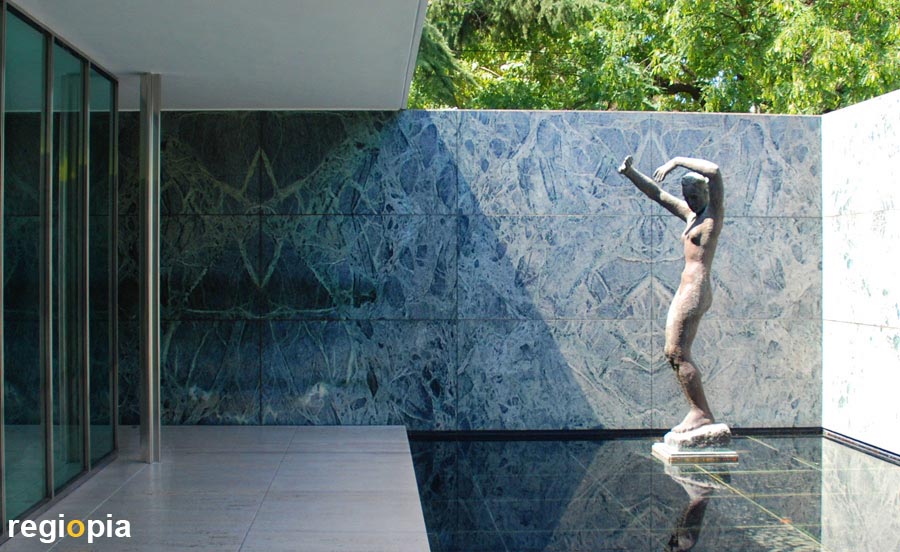
Barcelona Pavillon
The German Pavilion at the 1929 World's Fair was designed by Ludwig Mies van der Rohe. After the exhibition, the pavilion was demolished. The "Barcelona Pavilion" by Mies van der Rohe became an architectural icon and influenced generations of architects. In 1983 the "Pavelló Alemany" was reconstructed by the city of Barcelona. The statue "The Morning" by Georg Kolbe stands today in Berlin (Ceciliengärten Schöneberg) together with the sculpture "The Evening". A copy is in the German Pavilion in Barcelona. The replica of the pavilion was very successful, and the interior with the chairs by Mies van der Rohe and Lilly Reich was also restored. The chair has become world famous as the "Barcelona Chair" and is still being produced.
Buildings by Mies van der Rohe:
Neue Nationalgalerie Berlin Seagram Building New York Farnsworth Haus Illinois Institute of Technology
Av. Francesc Ferrer i Guardia 7
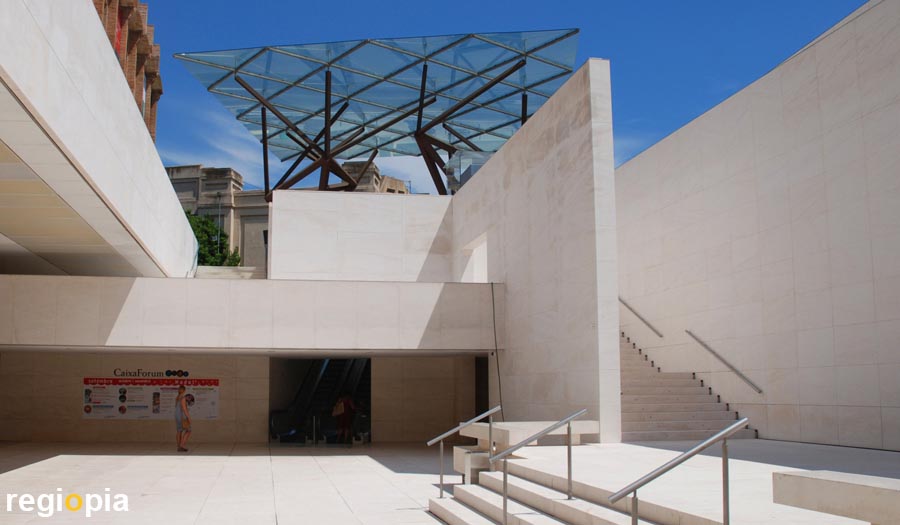
Caixa Forum
The Caxia Forum was established in 2002 in a former textile factory. The Art Nouveau building by Josep Puig i Cadafalch was opened in 1911. The old factory was built of light bricks and consists of three halls with two narrow courtyards. Two towers rise over the old textile factory. The new entrance area was added by the Japanese architect Arata Isozaki. The entrance is underground and does not block the historical building. Only a glass roof on steel supports draws attention to the new entrance.
The shape and material of the new building shows to what time it belongs. The references to Mies van der Rohe's Barcelona Pavilion are clear. The building of the German architect is exactly opposite.
Av. del Marques de Comillas 6-8
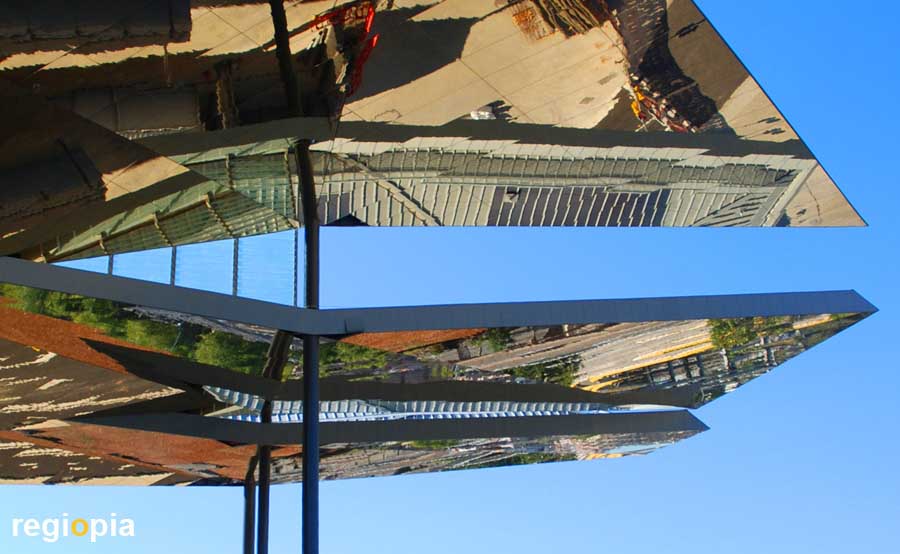
Mercat dels Encants
The new Market Hall at the Plaça de les Glòries Catalanes was opened in 2013. The draft mirrored roof structure, was designed by Fermin Vázquez by the architectural firm of Estudio b720 from Barcelona.
Plaça de les Glòries Catalanes
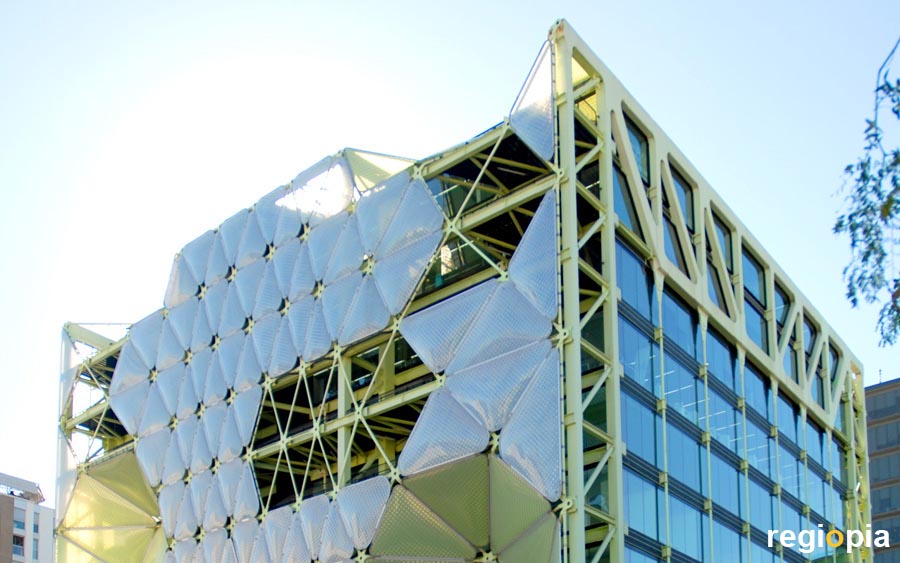
Edificio Media TIC
The Edificio Media TIC (Casa de las Tecnologías de la Innovación y la Comunicación) is an incubator for innovative companies and company founders. The steel construction with a facade made of plastic membranes is a building that requires almost no energy. The futuristic building was opened by architect Enric Ruiz-Geli in 2010.
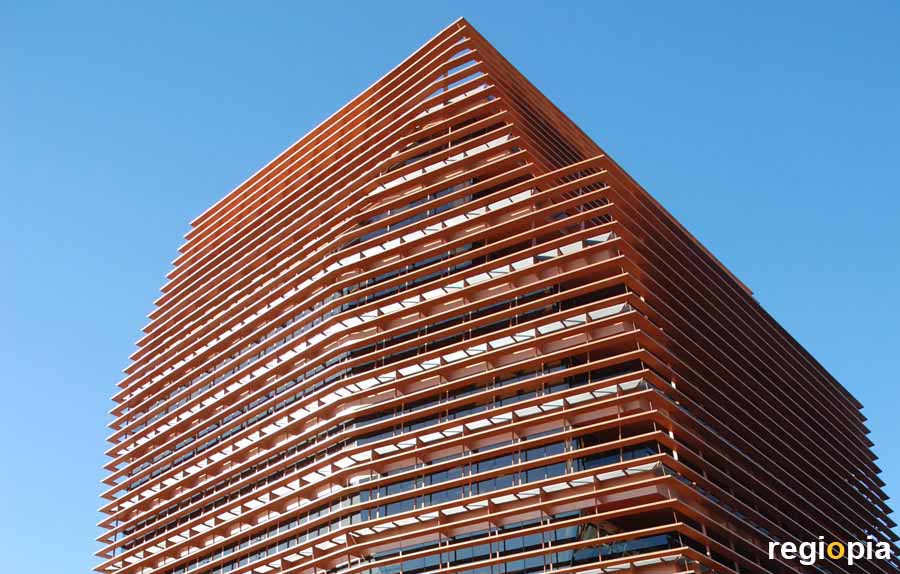
Edificio CMT
Another building in "Distrito 22 @ de Barcelona" is the Edificio CTM by Batlle i Roig Arquitectos. The striking orange sun protection elements completely cover the house of the "Comision del Mercado de las Telecomunicaciones" (CMT). The office building was completed in 2011. In the meantime, other organizations are using the building, including several Asian cultural associations. Therefore, the building is also known as Casa Asia.
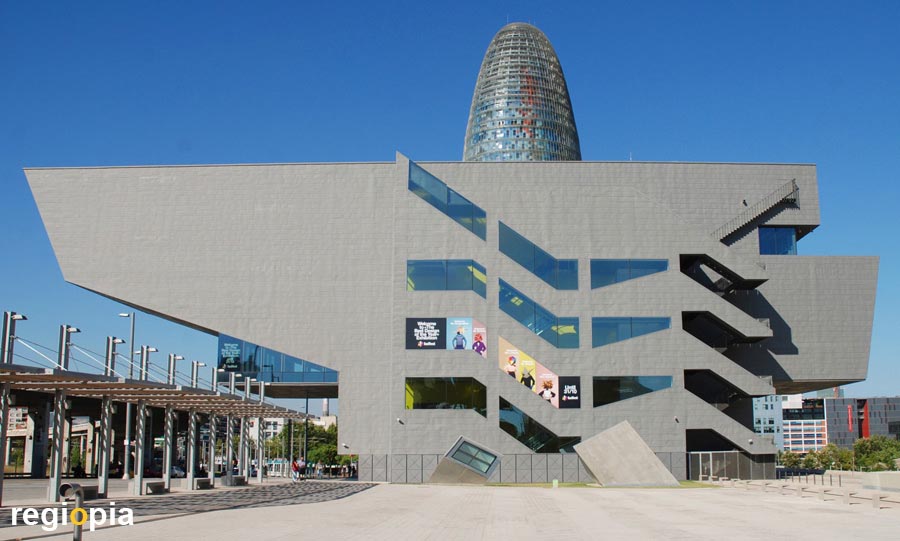
Disseny Hub
The Disseny Hub houses the "Foment de les Arts i el Disseny", the "Barcelona Center of Design" and the "Museum of Design". The Design Center was built in 2013 by MBM Architectes from Barcelona.
Plaça de les Glòries Catalanes
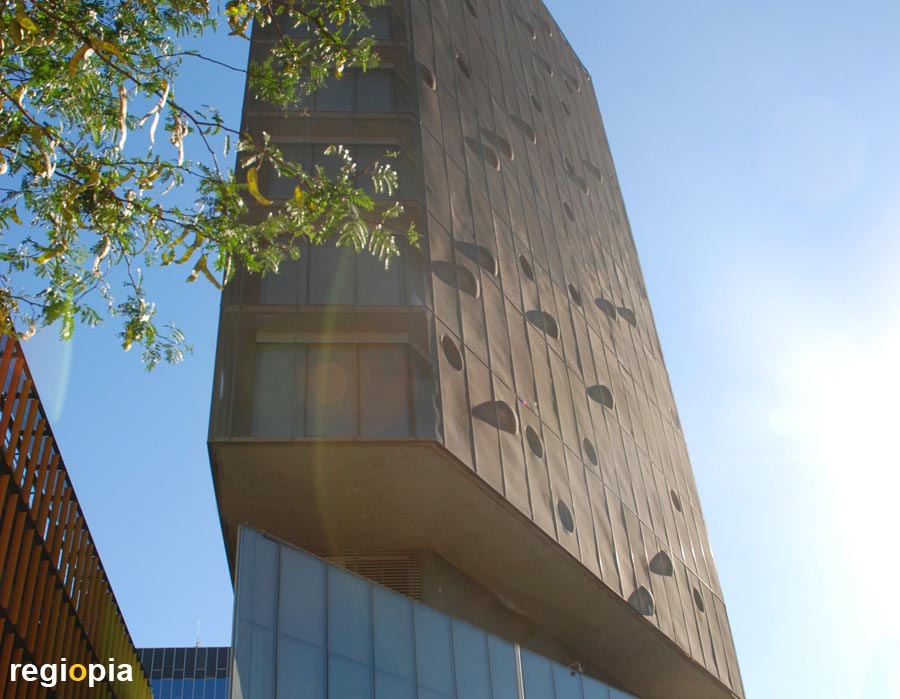
Edificio INDRA
The office building INDRA was built in 2006 as one of the first projects in "Distrito 22 @ de Barcelona", an urban transformation process in Poblenou. The former industrial factories were demolished and replaced by new buildings. The 10-storey office building stands on a pedestal in which the building technology is located. The design is by b720 architects. In front of the façade is a layer of stainless steel mesh that reduces solar radiation by 50%.
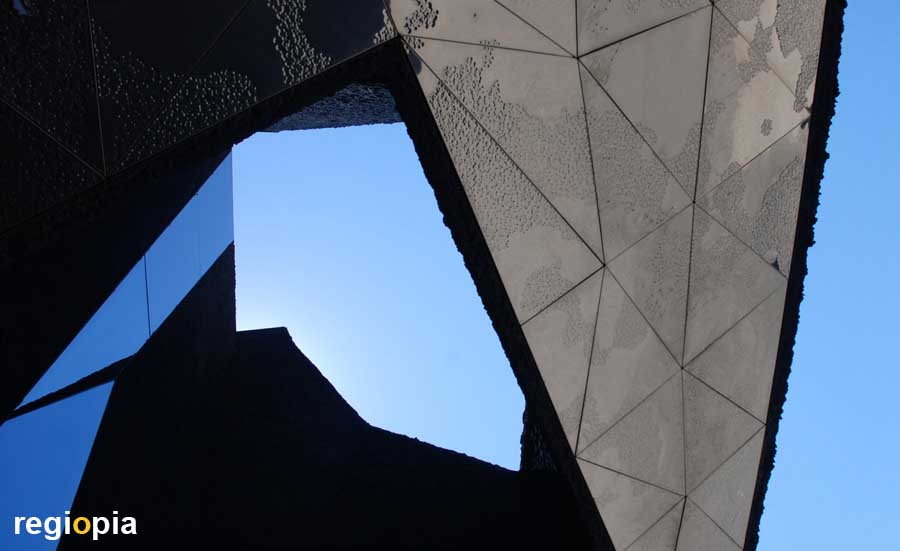
Museu Blau
Herzog & de Meuron designed the building in 2004 for the Universal Forum of Cultures. Later on the use was changed to become a museum. The swiss architects also planned the exhibition concept, of the Museu Blau which was opened to the public in 2011.
Other buildings by Herzog & de Meuron:
Elbphilharmonie Tate Modern Olympia Stadion Beijing Leonard St New York De Young Museum Vitra Haus St. Jakob Park Roche Türme Zentralstellwerk Museum der Kulturen Messehalle 1
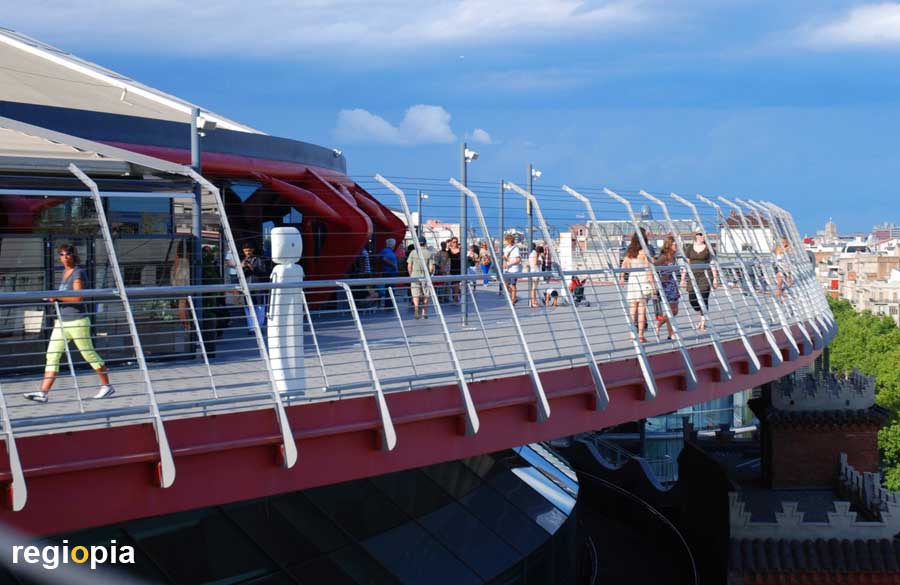
Placa de Toros Las Arenas
The former bullring built in 1900 was converted by Richard Rogers architects into a 6-storey shopping mall in 2011. In the middle there are escalators, walkways and elevators. The sales areas are on the edge of the old arena. The center offers a wrap-around viewing platform on the top floor.
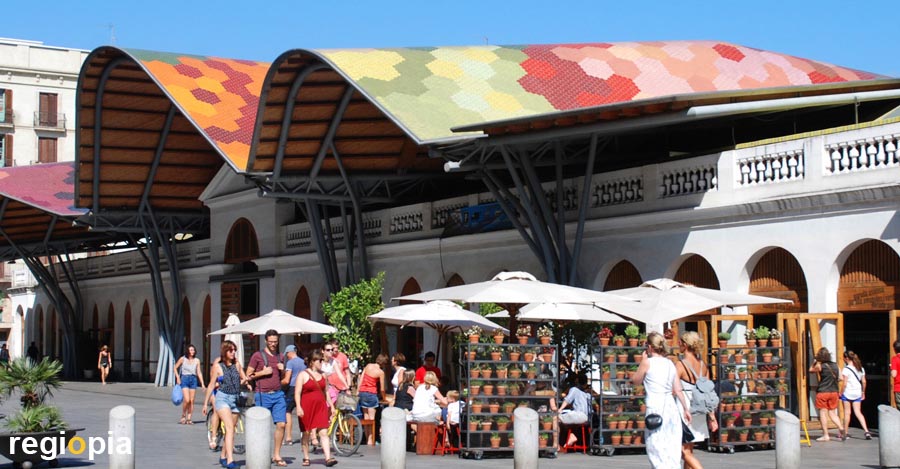
Mercat Santa Caterina
The covered market "Mercat Santa Caterina" of 1848 was redesigned by Enric Miralles between 1997-2005. Striking is the curved roof with colorful, octagonal tiles. Unfortunately Miralles died in 2000. The building is a successful mixture of old building fabric and new architecture.
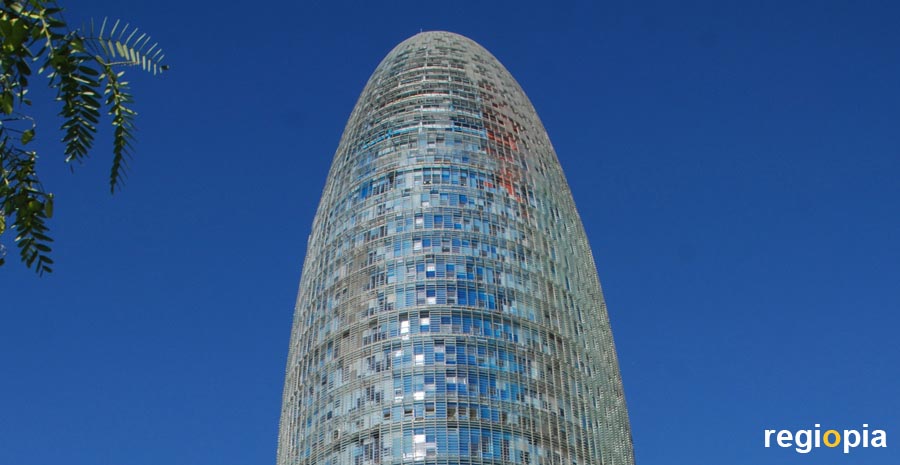
Torre Agbar
The 142 m high "Torre Agbar" was built in 2005 by Jean Nouvel. The French architect was inspired by the "Montserrat Mountains" near Barcelona. However, the tower should also remind you of the power and brightness of a geyser. The construction of the "Torre Agbar" started in 1999. After six years the office building of Agbar (the water authority of Barcelona) was completed.
Plaça de les Glòries Catalanes
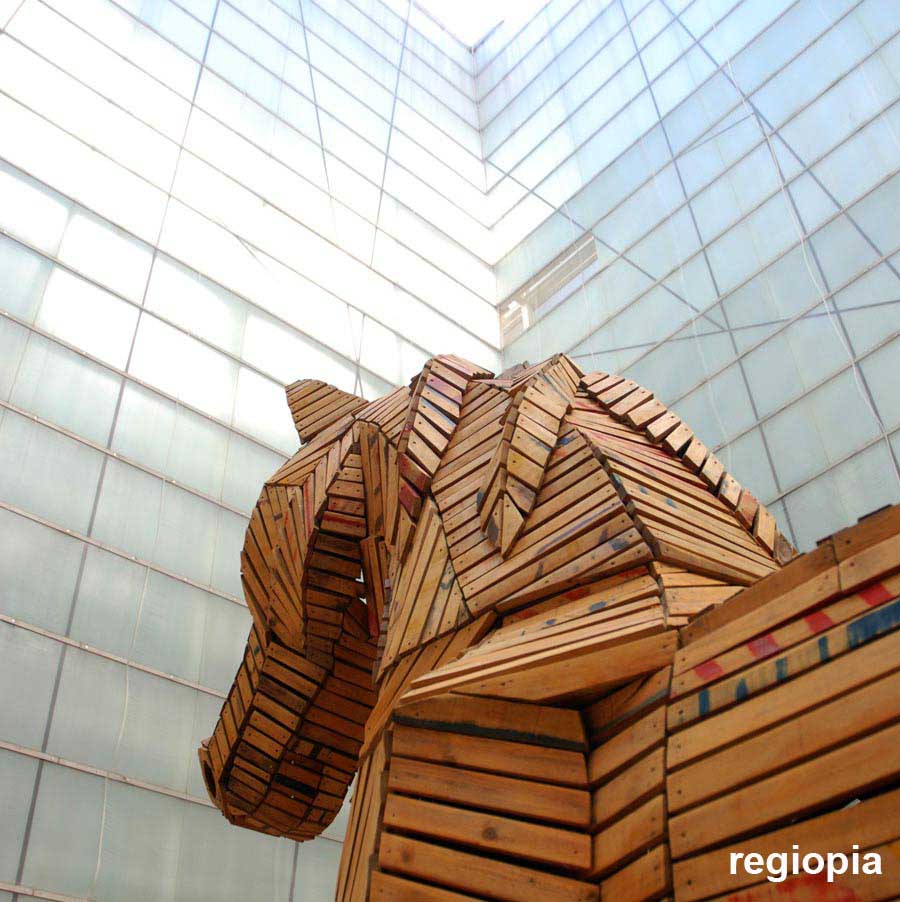
Auditori
The "Auditori" (auditorium) is the music complex of Barcelona opened in 1999. There is the National Orchestra of Catalonia, the Music Museum and the College of Music. From the outside you will see a concrete construction with a facade cladding of rusty metal. Inside it is the other way round, you will step into the light of an open patio. The building was designed by Rafael Moneo from Madrid.
Calle de Lepant / Av. Meridiana
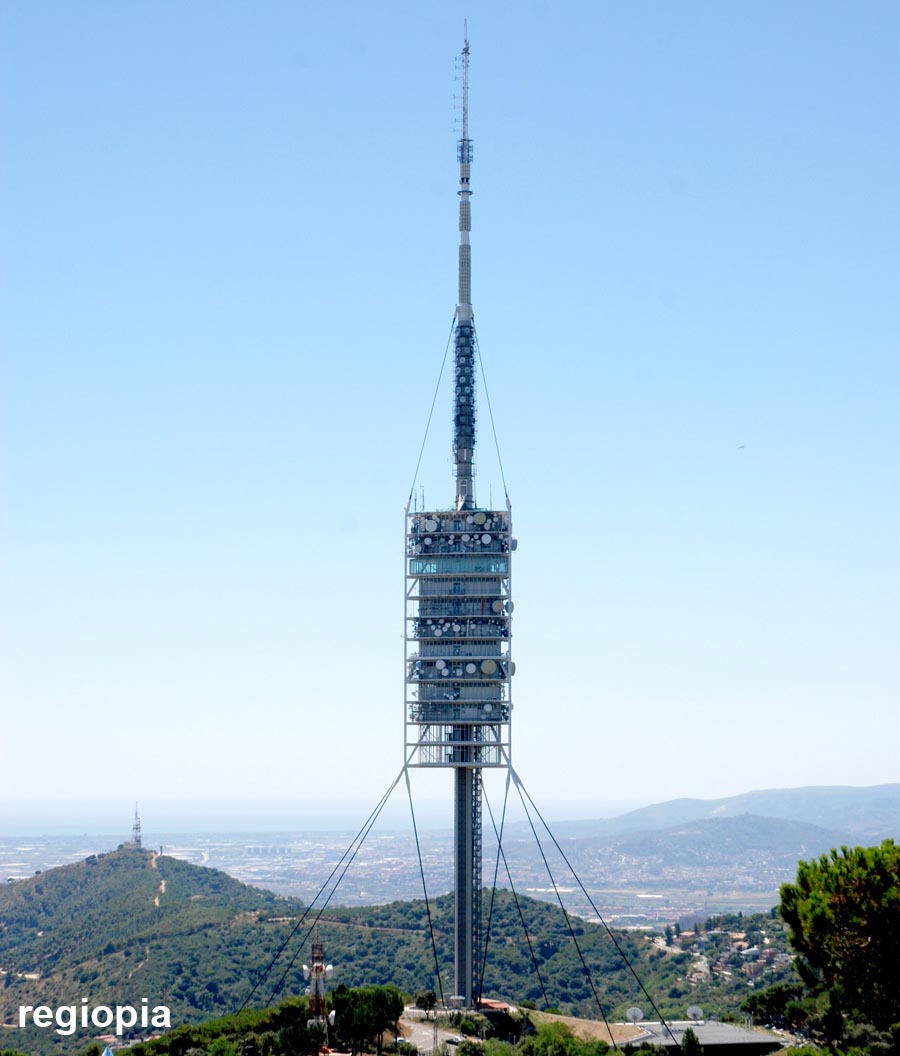
Torre de Collserola
The Torre de Collserola stands on the 425 m high mountain Turó de Vilana, which belongs to the ridges of the Sierra de Collserola. The television tower was built for the 1992 Olympic Games in Barcelona. is 288 m high. The British architect Sir Norman Foster designed the 288 m high structure. The Torre de Collserola is a mast that is held by steel cables. In the middle of the tower there are several technical levels and at 135 m there is a public viewing platform. The levels have a rounded triangular shape, which makes the tower stiff and offers little surface for the wind. When you enter the tower you first walk through a building and then a shaft made of exposed concrete, offers a spectacular view upward.
Buildings by Foster:
Hearst Tower Hongkong & Shanghai Bank Commerzbank Reichstag Dresden Station Architecture in London
Ctra. de Vallvidrera al Tibidabo
Map Architecture Barcelona
ads
Architecture Guide
Modern architecture in Barcelona
The architecture guide Barcelona begins in 1929 with the "German Pavilion" by Mies van der Rohe. You can find the buildings by Antonio Gaudi at > Barcelona Sights.
regiopia architecture guides
ads
Ads


